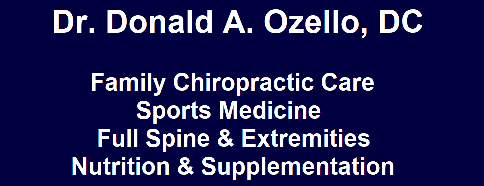Health and fitness goals can be started anytime but the beginning of the year is a great time to start working toward the achievement of goals. One year is an excellent measuring period for health and fitness goals.
Years can easily be compared to past and future years. Years can be broken down into weekly, monthly and quarterly measuring periods for short and intermediate goals. Years make great goal time frames because events are often scheduled far in advance so calendars can be marked, and preparation can be started well in advance.
The first step in health and fitness goals is determining a realistic goal for the year. Goals must be challenging but realistic. For example, if you enjoy running and/or walking then a good goal is the completion of your first running event. It does not matter if it’s a 5k, a half-marathon, a marathon or a one mile walk. Find a reasonable distance for your abilities and make it your goal.
After you have established a realistic goal, the next step is to educate yourself on how to prepare for the achievement of your goals. Knowledge is power so learn how to achieve your goals from experts. Informative, reliable resources are available in videos, articles, books, magazines, and in person.
Ask questions. If you know an expert in the field you are pursuing, ask them for assistance. Every little bit of advice helps. For example, if your fitness goal is improving your heart rate recovery (HRR) then ask a personal trainer the best forms of exercise for cardiovascular fitness.
The next step is providing yourself the proper tools to achieve your health and fitness goals. This includes training gear, workout clothes and any other necessary equipment. For example, if your goal is to lower your sprint time in the 40-yard dash then you need good quality running shoes, a running surface and training equipment that builds strength, speed and explosiveness.
The next step is picking an event or time frame. Check various athletic event web sites, local newspapers and magazines for a list of events. For example, if you want to complete your first sprint triathlon then check local running, swimming and cycling web sites and stores.
Once you have picked an event or finishing date, mark it on all your calendars. Write it big and bold to remind yourself this is your health and fitness goal for the year.
Write down all the added health and fitness benefits that come along with your consistent training. If your goal is to cycle your first century (100 mile) ride, write it down at the top of your training journal, then write all the other benefits of your training. These can include weight loss, decrease of resting heart rate, reduced blood pressure, improvement of muscle to fat ratio, and increased leg strength.
Once you have established your target date, develop your training plan. Small incremental improvements which coincide with your short and intermediate goals make for the development of a strong training plan. For example, if your goal is to run a half-marathon in December establish a training routine that slowly and consistently pushes you toward the achievement of that task.
Short term goals can be daily, weekly, bi-weekly or monthly while intermediate goals can be monthly or quarterly.
For example, if your goal is to lose 25 pounds for an event in December you need to start early. Plan ahead and work toward an achievable short-term goal of losing one pound every two weeks. This short-term increment makes the breakdown of your health and fitness goals much easier.
When developing your plan give yourself some leeway by building in a small margin of error. Mentally prepare for temporary setbacks in training. Life happens and something it forces you to modify your plans. Do not get discouraged or quit. Use these setbacks to increase your motivation while striving to move forward.
Once your plan is complete, begin executing your plan. Start training and eating properly to work toward the accomplishment of your short, intermediate and long-term goals.
Utilize these simple tips to keep your goals fresh in your mind. Post your goals where you can see them every day. Write down your goals first thing every morning. Re-enforce your goals while training. For example, if you are cycling downhill, whisper your goals to yourself while pedaling. Write and speak in a tense where you have already achieved the goals. For instance, if your goal is to do 50 pull-ups non-stop by the end of December write down and say to yourself, “I did 50 pull-ups non-stop in December.” Important factors in accomplishing your goals are to have fun and be persistent. Consistency is vital. The single most important factor in achieving your health and fitness goals is to believe in yourself. Be bold and believe in yourself as you work with consistency and tenacity to accomplish your goals.
Dr Donald A Ozello DC of Championship Chiropractic in Las Vegas, NV
Web Site: http://www.championshipchiropractic.com/
Blog: https://www.championshipchiropractic.com/wordpress/
YouTube: https://www.youtube.com/user/drdozellodc/videos
Twitter: https://twitter.com/drdozellodc
Facebook: https://www.facebook.com/Championship-Chiropractic-280141628688300/
LinkedIn: https://www.linkedin.com/in/dr-donald-a-ozello-dc-716b3233
“Running: Maximize Performance & Minimize Injuries” https://www.amazon.com/Running-Performance-Chiropractors-Minimizing-Potential/dp/1493618741
**Disclaimer: Always consult a medical professional before beginning an exercise program. Always work within your capabilities. Never perform an exercise that elicits or increases pain or symptoms. Reading this article and viewing the linked videos does not take the place of seeing a medical professional. Please visit a medical professional for evaluation, diagnosis & treatment.

